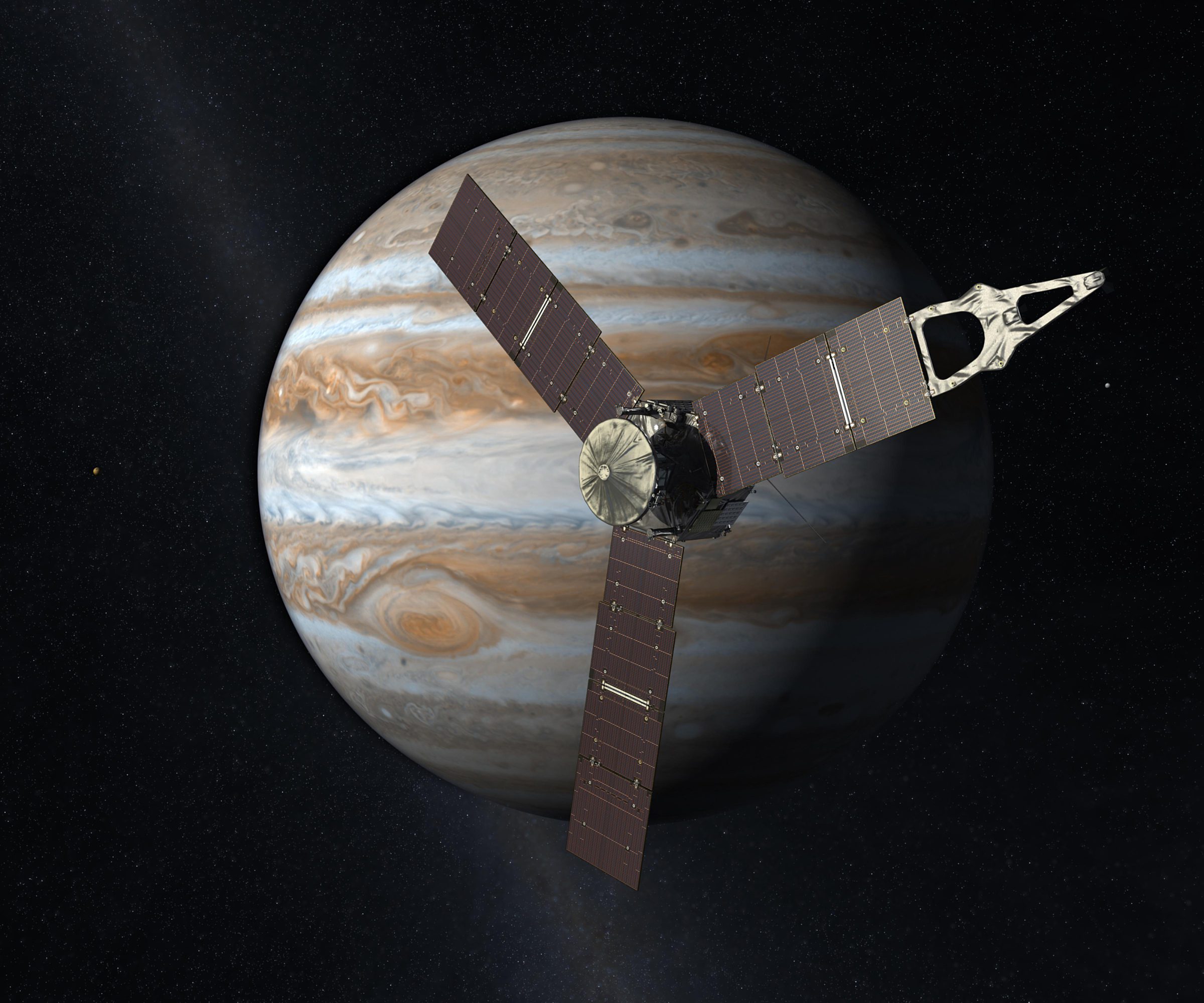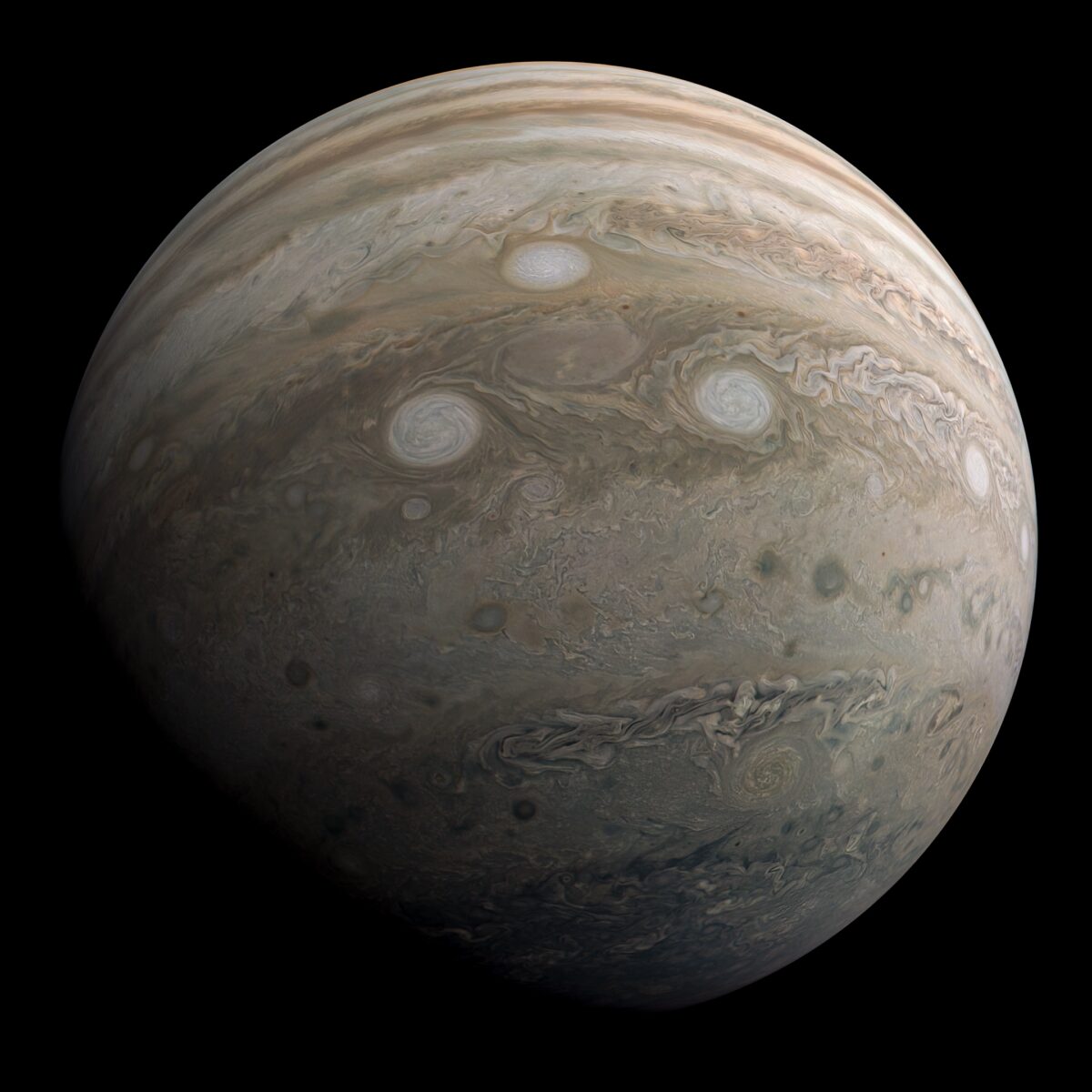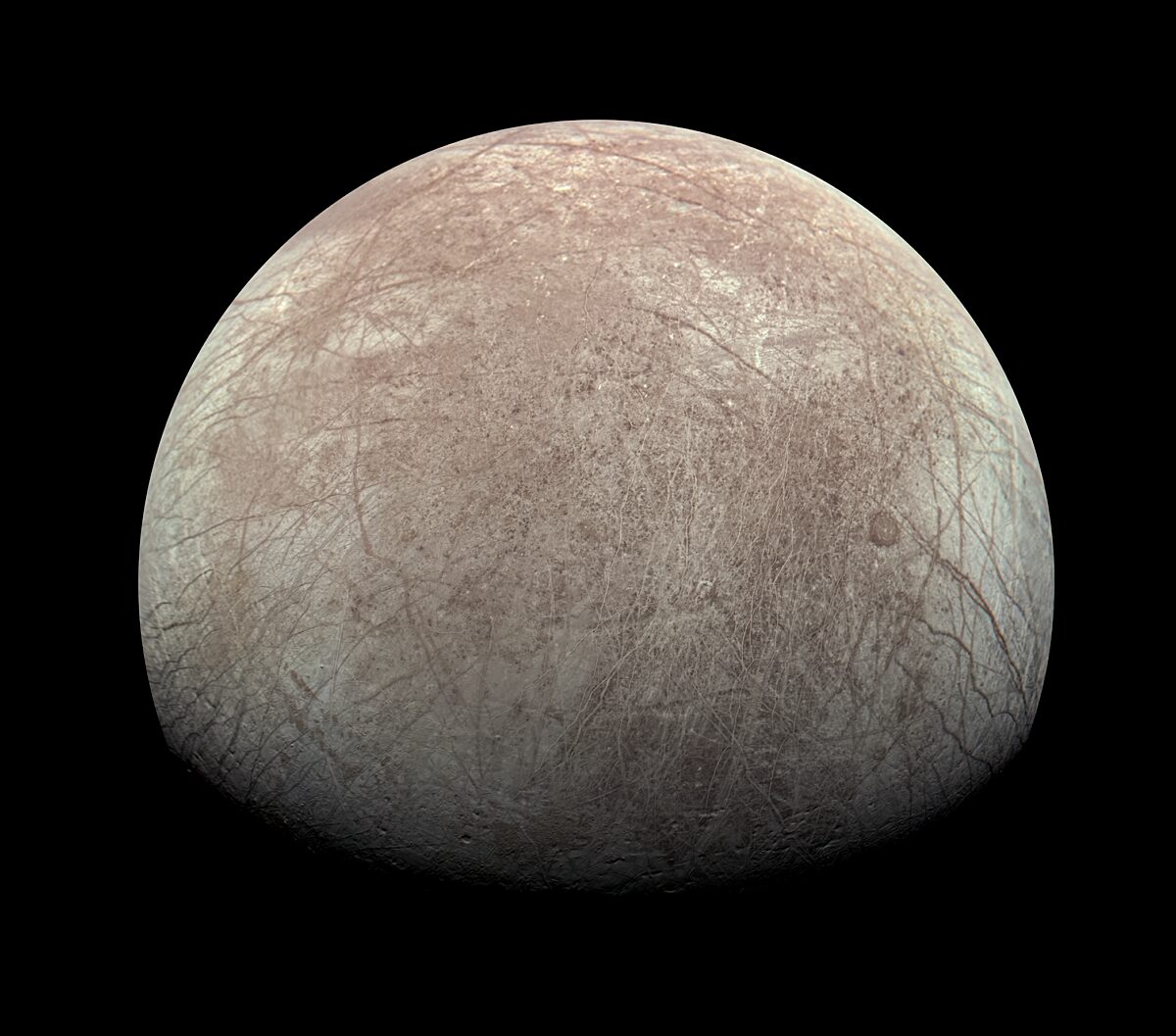Juno, NASA’s Jupiter probe
Highlights
Juno’s main goal is to learn more about Jupiter’s origins and how the planet has changed.
Though Juno’s primary mission wrapped in July 2021, it’s been granted an extended mission that’s expected to end in 2025.
By studying Jupiter, we can better understand the formation of our entire Solar System.
What is the Juno mission?
In Roman mythology, it’s said that the mighty god Jupiter would cloak himself in clouds to hide his mischievous deeds. Only his wife, the goddess Juno, could peer through the shroud and see his true self.
NASA’s Juno spacecraft has certainly lived up to its namesake. By gazing beneath Jupiter’s swirling bands, Juno has been able to view the planet’s inner workings in a way no other probe has.
Juno seeks to understand Jupiter’s past by studying its present mysteries. Using a suite of highly sensitive instruments, the probe has shed new light on Jupiter’s powerful storm systems, its magnetic field and much more.
Since Jupiter is believed to be the oldest planet in our Solar System, understanding its origins and internal processes could help explain the formation of our entire cosmic neighborhood.
When did Juno launch and when did it reach Jupiter?
Juno launched on August 5, 2011. It blasted off from the Cape Canaveral Air Force Station on board an Atlas V rocket. The spacecraft traveled roughly 3 billion kilometers (nearly 2 billion miles) before arriving at Jupiter on July 4, 2016.

What has Juno discovered so far?
In its time at Jupiter, Juno has revealed literal and figurative new depths to the gas giant. The planet’s violent storms seem to be more chaotic and compelling than previously thought: for example, the spacecraft has spotted a cluster of cyclones and anticyclones at Jupiter’s north pole. In fact, Juno has found evidence of “Earth-sized storms” at both of Jupiter’s poles, according to NASA.
Although Juno can’t observe Jupiter’s core directly, the spacecraft has provided scientists with evidence that the planet’s core is larger and “fuzzier” than previously thought. Researchers now hypothesize Jupiter has a diluted core rather than a solid, compact center.
Juno has also detected multiple kinds of lightning on Jupiter, providing scientists with new insight into the planet’s atmosphere. Juno’s findings suggest that some of Jupiter’s weather is radically different from Earth’s; on our planet, for example, most lightning comes from water clouds. But Juno has found that at least one type of Jovian lightning is formed high up in the planet’s atmosphere, where temperatures are far too cold for water. Instead, this kind of “shallow lightning” is thought to be caused by ice crystals and ammonia colliding.

When does the Juno mission end?
Although Juno’s primary mission ended in July 2021, it began its extended mission the following month. During the extended
mission, Juno is exploring even more of the Jupiter system, including
some of the planet’s most intriguing moons: Ganymede, Europa, and Io.
Juno will also investigate Jupiter’s atmosphere and rings in greater
detail.

According to NASA, Juno’s mission will officially end in September 2025, or until the spacecraft can no longer function. Until then, the spacecraft will continue to send data that will undoubtedly inspire future exploration of the Jovian system.
Support Missions Like Juno
Whether it's advocating, teaching, inspiring, or learning, you can do something for space, right now. Let's get to work.


 Explore Worlds
Explore Worlds Find Life
Find Life Defend Earth
Defend Earth


